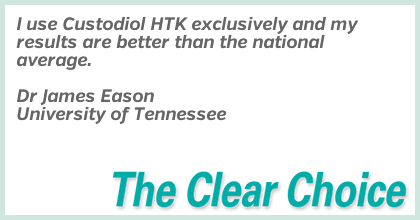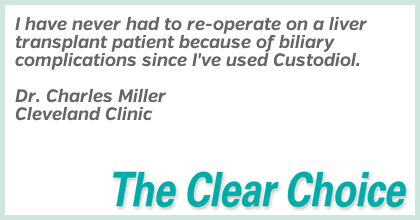Liver Transplant Biliary Complications for Deceased Donor Grafts: Comparison of HTK and UW Solutions
W. A. Marshall¹, A. J. Tector¹, T. C. Borup1, R. S. Mangus¹ ¹Indiana University School Of Medicine,Surgery/Transplant,Indianapolis, IN, USA
Conclusion:
HTK liver graft preservation in deceased donors is associated with better graft survival, less imaging, less risk of biliary leak and intrahepatic stricture, and a lower risk of intrahepatic strictures in DCD grafts.
HEART STUDIES
Saitoh (2000) – Heart preservation in HTK solution: role of coronary vasculature in recovery of cardiac function
Poor myocardial tolerance to prolonged cold ischemia remains a major concern in heart transplantation. In this study, we estimated superiority of Histidine-Tryptophan-Ketoglutarate (HTK) over University of Wisconsin (UW) as a cardiac preservation solution.
Lee (2010) – Superior myocardial preservation with HTK solution over Celsior in rat hearts with prolonged cold ischemia
Increasing allograft ischemic time is a significant risk factor for mortality following heart transplantation (HTx). The purpose of this study was to evaluate the protective effects of histidinetryptophan-ketoglutarate (HTK) and Celsior (CEL) using a rat HTx model with prolonged cold storage.
Gu (1996) – HTK solution is more effective than UW solution for cardiac preservation
This study compared the experimental outcomes of donor heart preservation in rats between Custodiol HTK and UW solutions. It concluded that HTK is much more effective than UW solution for heart preservation, and that HTK may lead to better techniques in heart preservation for transplantation.
Sung (2014) – Myocardial Protection in donor heart preservation: a comparison between Bretschneider’s HTK and Cold blood cardioplegia
This study compares the efficacy of myocardial protection in a single dose of Custodiol HTK with repeated doses of cold blood cardioplegia. This study concluded that a single dose of Bretschneider’s HTK solution could effectively reduce pumping time and afford similar myocardial protection compared with repeated doses of CBC in the preservation of donated hearts.
Ackerman (2002) – Celsior versus Custodiol: early postischemic recovery after cardioplegia and ischemia at 5°C
This study compares Celsior and Custodiol preservation solutions in canine hearts in regards to the postichemic recovery of the organs. It found that there was no advantage of cardioplegia with Celsior over cardioplegia with Custodiol.
LIVER STUDIES
Mangus (2016) – A comparison of liver transplant biliary complications for deceased donor drafts preserved with histidine-tryptophan-ketoglutarate and University of Wisconsin solutions
Flushing of the biliary microvasculature at the time of whole organ liver graft procurement appears to be an important component in optimizing post-reperfusion blood flow to the biliary system.
Schoening (2015) – Warm HTK donor pretreatment reduces liver injury during static cold storage in experimental rat liver transplantation
The new concept of warm HTK pretreatment significantly reduced ischemia-reperfusion injury. The reduced ischemia-reperfusion injury was due to MMP inhibition. Warm HTK donor pretreatment is easy to handle and could further improve HTK’s potency in liver preservation.
Nguyen (2015) – Biliary Reconstruction in Pediatric Liver Transplantation: A Case Report of Biliary Complications and Review of Literature
With the advent of segmental liver allografts from liver donors, reduced-size cadaveric allografts, and split cadaveric allografts, pediatric pre-transplantation patient mortality has reduced. However, this expansion of the donor pool for size-appropriate allografts for patients with end-stage liver disease has led to an increased incidence of biliary complications.
de Vera (2009) – Liver transplantation using donation after cardiac death donors: long-term follow-up from a single center
There is a lack of universally accepted clinical parameters to guide the utilization of donation after cardiac death (DCD) donor livers and it is unclear as to which patients would benefit most from these organs.
Eghtesad (2005) – Preservation solutions in liver transplantation: what are the options?
Alexis Carrel took the initial steps in the area of organ preservation by successfully preserving an artery for several days using chilled Locke’s solution, although this effort was largely overshadowed by his work in vascular surgery and organ transplantation.
Heidenhain (2009) – Incidence of and risk factors for ischemic-type biliary lesions following orthotopic liver transplantation
This large retrospective study showed that there is a significantly increased risk of ischemic-type biliary lesions when using UW compared to HTK. From this single center study they concluded that they would exclusively use HTK in liver transplantation.
Welling (2008) – Biliary Complications following liver transplantation in the model for end-stage liver disease era: Effect of donor recipient and technical factors
This single center retrospective study analyzed the effects of the donors, recipients, as well as the technical factors involved in liver transplantation and their effect on biliary complications. They found that the most important variables to reduce biliary complications are decreased warm ischemic times, use of HTK, and the use of a stent.
PANCREAS STUDIES
Fridell (2010) – Histidine-tryptophan-ketoglutarate for pancreas allograft preservation: the Indiana University experience
Histidine-tryptophan-ketoglutarate solution (HTK) has been scrutinized for use in pancreas transplantation.
Becker (2007) – Pancreas transplantation with HTK solution and UW solution: Is there a difference?
This study compares the efficacy of HTK and UW in preservation of pancreas grafts in regards to patient and graft survival as well as some of the biomarkers of successful transplantation. They found that HTK is clinically comparable to UW, and that both solutions are safe for pancreas preservation.
Paushter (2013) – HTK and UW solution demonstrate equal effectiveness in the preservation of human pancreata intended for islet isolation: a large scale, single center experience
This study compared the ability of HTK and UW to preserve pancreas grafts for islet transplantation. They found equivalent results between HTK and UW for preservation of pancreata.
Schneeberger (2008) – A prospective randomized multicenter trial comparing HTK versus UW perfusion solution in clinical pancreas transplantation
This study found that in the clinical setting with cold ischemic times averaging 10 hours, HTK and UW solutions appear to be equivalent in preserving pancreata for transplantation.
Reddy – Pancreas Transplant using HTK – Is it a Cautionary Tale?
This abstract presented at the American Transplant Congress in 2009, found that at their center there was no difference in pancreas transplant outcomes or biomarkers between HTK and UW preservation solutions with cold ischemic times up to 15 hours.
KIDNEY STUDIES
Klaus (2007) – Kidney transplantation with Belzer or Custodiol solution: a randomized prospective study
The purpose of this study was to compare the Belzer vs Custodiol solutions for cadaveric kidney perfusion in relation to delayed graft function, renal function, acute rejection episodes, and patient and graft survivals.
Agarwal (2006) – Comparison of HTK solution and UW solution in prolonged cold preservation of kidney allografts
This study compares Custodiol HTK and UW preservation solutions in kidney allografts with prolonged cold ischemic times greater than 16 hours. They found that HTK is at least comparable to UW in the preservation of kidney allografts even with prolonged cold ischemic times. Even with ischemic times longer than 24 hours HTK was not inferior to UW in organ preservation.
DeBoer (1999) – Eurotransplant randomized multicenter kidney graft preservation study comparing HTK with UW and Euro-Collins
This study compared HTK, UW and Euro-Collins solution in the preservation of kidney grafts with regards to the initial graft function as well as the long term graft survival. The study concluded that both HTK and UW were superior in comparison to EC solution, and that HTK is comparable to UW in preserving kidneys from heart beating donors.
Lynch (2008) – Comparison of HTK and UW preservation in renal transplantation
This large retrospective single center comparison between HTK and UW transplant solutions in kidney transplantation compares multiple factors including patient and graft survival as well as delayed graft function. It concludes that although there was increased incidence of DGF with HTK, there was similar efficacy between HTK and UW in terms of patient and graft survival.
This abstract presented at the ATC in 2012 retrospectively reviewed living donor kidney transplants comparing HTK and UW to LR solutions. They found that HTK was superior to LR in preventing DGF, and that both HTK and UW are more cost effective than LR in live donor kidney transplantation.
ABDOMINAL TRANSPLANT
Latchana (2015) – Preservation solutions used during abdominal transplantation: Current status and outcomes
Evolution of transplantation and graft preservation are discussed followed by classification of preservation solutions according to the composition of electrolytes, impermeants, buffers, antioxidants, and energy precursors.









